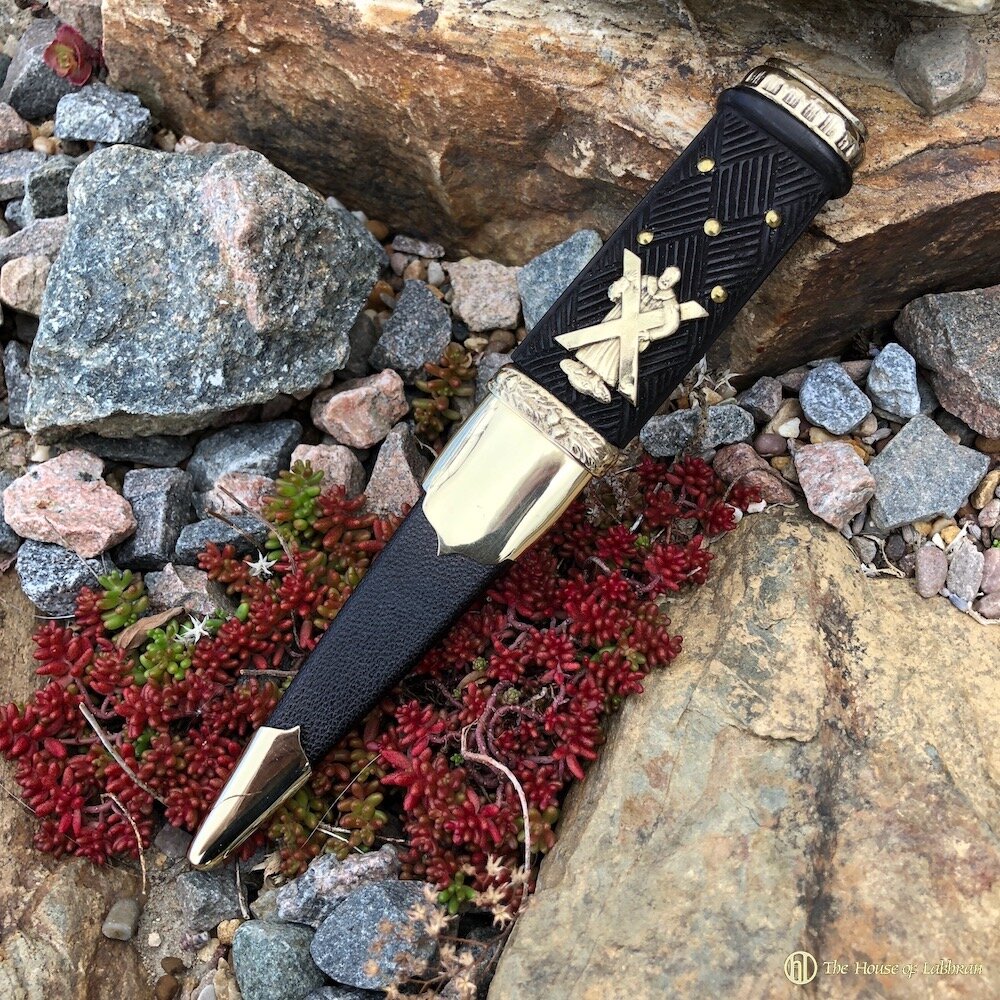Black Watch Royal Highlanders Regimental Sgian Dubh
Black Watch Royal Highlanders Regimental Sgian Dubh
Hand crafted by the our regimental silversmith, featuring the iconic St. Andrew (Wee Jimmy) and thistle mounts, adorned with a genuine smoky quartz cairngorm. The black wood hilt is meticulously carved by hand, paired with a scabbard enveloped in supple leather for a classic touch of elegance.
The Black Watch was founded in response to the 1715 Jacobite uprising, recruiting Highlanders from trusted clans such as Campbells, Grants, Frasers, and Munros. By 1725, six companies were established and strategically placed in various locations throughout the Highlands. Their main objectives included maintaining peace between clans, suppressing raiding activities, and upholding laws prohibiting the possession of weapons.
In 1739 King George II authorised the raising of four additional companies to be formed into a “Regiment of the Line” of the regular army, with the Earl of Crawford as Colonel. The first mustering of the new Black Watch regiment took place near Aberfeldy the following year.
The Black Watch name was derived from the dark colour of the tartan and the original role of the regiment to “watch” over the Highlands. In 1743 the regiment was ordered to march to London for inspection by the King.
Due to a rumour that they were to be forced to serve in the West Indies rather than service in Scotland for which they had been enlisted, many of the men mutinied and decided to return home. Over a hundred were captured and returned to London, where they were tried by court martial and three of the leaders were condemned to be shot in the Tower.
The remainder of the regiment proceeded to Flanders for action against the French. It remains for speculation whether the 1746 Rebellion could ever have taken place had the Black Watch been left to fulfil its original role of policing the Highlands.





